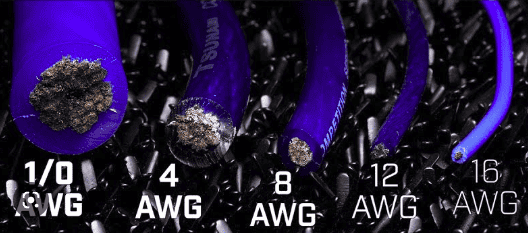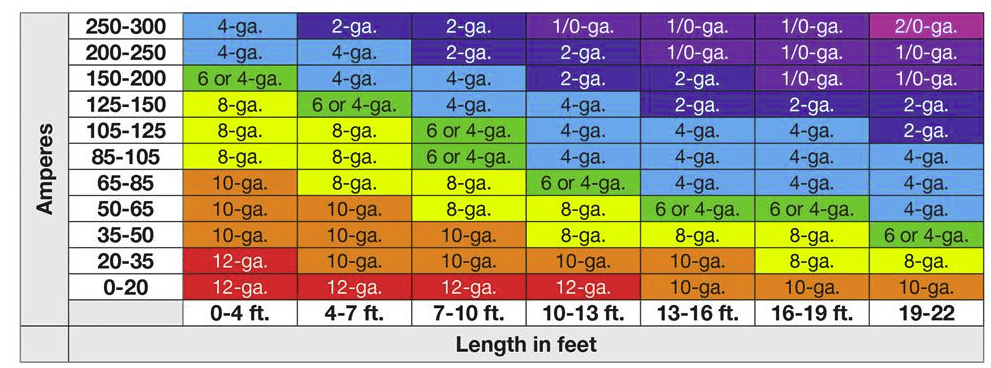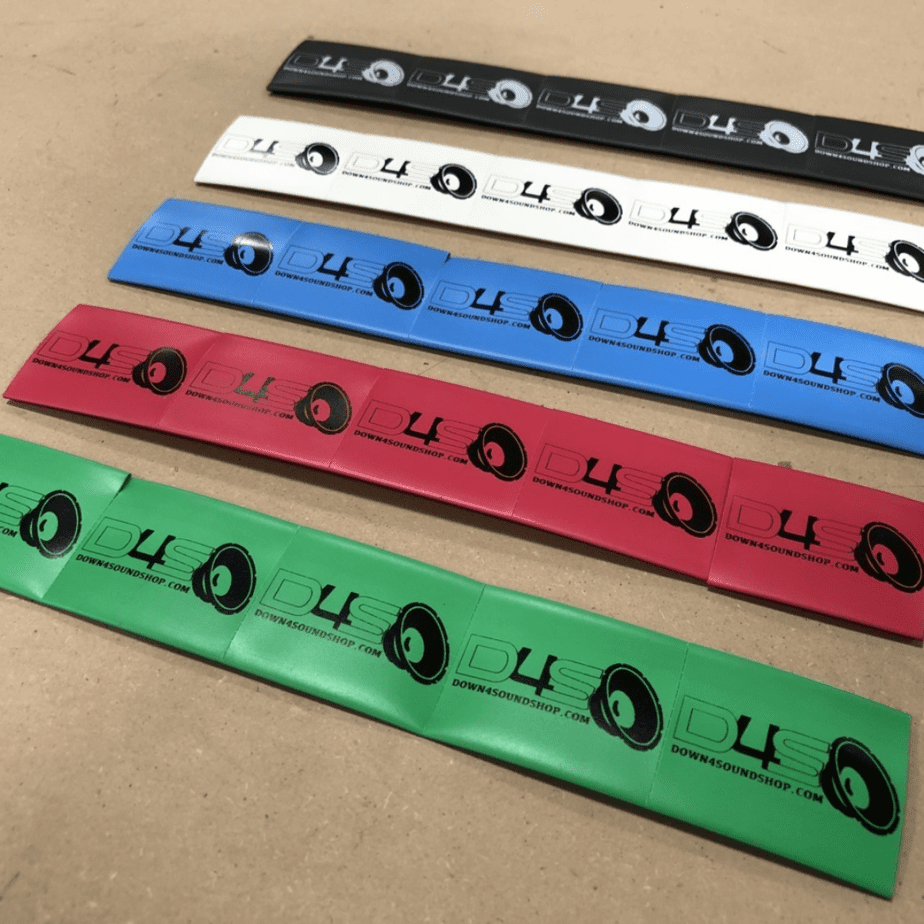Picking the correct Car audio wire and gauge
Car audio wiring might seem daunting, but it doesn’t have to be! You can create a powerful custom setup that will sound great and last for years by picking the correct wire for your needs. This blog post will walk you through the types of wire and how to choose the best one for your system. You’ll be ready to start shopping for your new setup by the end!
1. What is speaker wire, and what does it do?
- The Speaker cable is the wire used to connect speakers to their amplifier source. Choosing the correct type of speaker wire for your car stereo system is essential to get the best sound quality. The Speaker wire gauge is just the start when wiring your car stereo system. Copper clad aluminum and copper stranded wire is just another part.
- The three vital electrical properties of speaker wire are resistance, capacitance, and inductance. Resistance is essential, as low-resistance wire allows more of the source’s power to reach the speaker coil. This results in more power and more sound. Capacitance and inductance are factors to consider, but they are less critical than resistance. Before I go any further, dont use solid copper from the house; your appliances and grandma’s lampshade needs their wire.
- When choosing speaker wire, consider all these factors to get the best sound quality for your car’s audio system. Power cable & Speaker wire are made from a copper clad aluminum wire core or pure copper wire known as OFC cabling or Oxygen-free copper wire.

2. How to choose the right gauge of speaker wire?
- When it comes to the wire gauge (or thickness) is essential. A lower-gauge number indicates a thicker wire, while a higher-gauge number indicates a thinner wire. Speaker wires with lower-gauge numbers are better at carrying an amplified audio signal. When determining which wire gauge and length to use, consider how far away the speakers are from your amplifier for all power, ground cables, and the number of channels you need to hook up. For speaker wire runs, a 16/14- speaker wire gauge is sufficient but not always depending on your speaker wire size and what your amplifier has on the output speaker terminal. Only use the proper gauge wire size; sometimes thicker cable inputted incorrectly can damage the amplifier terminals, and the results are usually melted input or output blocks. Wire size, and wire length is everything. Same with speaker cable and speaker wire, more or less, are the same thing, but they matter just as much.
- For longer power and speaker wire runs (to another part of the car, for example), it is better to use a thicker wire to go into your car to a distribution block if its power and ground wire; using power wire is usually around 0/1, 0/2, 0/4 sizes CCA or OFC lower-gauge wire due to the wire cable being far away, power carried needs them to have current draw demands from your amplifier may vary, but no matter what you want that full power effect within all your cable runs.
- Remember that the recommended gauge of speaker wire may differ depending on your audio system. Always consult your manual before making any changes to your system. Correctly identifying how much wire, wire size, and thick wire is excellent if you need it and a pain if you forget to add more. This is for all speaker wire gauge and gauge wire size at down4sound.
- I REPEAT. PLEASE pay attention to the wire you need, where your amps are, and all the speakers; this includes door speakers, front speakers, and any speakers being amplified. Use a tape measure to get exact measurements. Don’t forget to add some length to maneuver your speakers, amps, and subwoofers. This isn’t the same amount in all applications, do your best.

3. Types of speaker wire:
- CCA vs OFC read about the CCA (thin copper plating on the aluminum wire) vs the OFC article here. All the larger aluminum wires, bare wire, more conductor strands, and electrical current info is in that article by Brandon.
4. Installation tips:

- Use the down4sound wire stripper, and down4sound hydraulic crimp connector.
- Use heat shrink on all your connections after securely crimping them. Electrical tape isn’t recommended, but some people still use it. This isn’t exactly as secure as quality car stereo heatshrink offers.
- Use the same size wire; one smaller gauge and one bigger gauge wire is not recommended and can malfunction your equipment resulting in power loss, and the power rating goal won’t be met.
- The current draw plays into the wire you need for optimal performance. The goal is to hit the power rating without issues. Cable lengths and speaker wires length play an important role in this dont forget, it’s primarily based on the load and cable length of the application.
- Check all speaker impedance; nothing is more aggravating than taking it apart because you didn’t check the product. Nominal impedance is wise for whatever your application calls for.
- Take your time when installing, and make your wiring job look like a pro did it, don’t worry. Anyone can make it happen. It takes time and patience.
- Label your cable run (s), RMS power, and if it’s a speaker ohm rating for future upgrades.
- Check for the stranded power cable amount; the more, the better; if it fits when it comes t the power carried, FINE COPPER CONDUCTORS WITHIN STRANDED WIRE for both CCA speaker wire and OFC, aka standard copper wire that’s usually oxygen-free. Some subpar brands trick users into OFC as oxygen-free cabling using one side as CCA and one side as OFC! WE DONT tolerate that here at Down4sound. We consider that misleading! This is why we are telling you that we don’t carry any of that junk. Our Tinned OFC wire is probably the best as it’s spot on with most wire gauge chart by most manufacturers. We use a little more stranded copper wire tinned to keep corrosion off the copper wire. Our copper clad aluminum wire has more conductor strands than most wire brands.
- Use the correct connection on the speaker and or subwoofer! If it’s spade connectors, use them or solder the connection. Please note that if a subwoofer has a spade connector (s), this driver’s power handling is less than that of a sub with an 8 GA connection, for example.
- USE the right speaker wire gauge! A thicker speaker wire is great if it fits cleanly and securely.
- One gauge wire is 0/1 wire. Before anyone says, I didn’t cover in it this speaker wire gauge overview.
- Extra cable length, tuck it, cut in, or use it for another day.
5. Common problems with speaker wire and cabling and how to fix them
- Precut wires to small; this is because the user didn’t do the steps listed above. be sure to get our precut lengths, as we always give you a little more.
- Lower impedance issues this s usually when the audio speakers are wired incorrectly, resulting in a blown speaker or amp. Down4sound car amplifiers use 4-way protection chips inside the amplifiers, and if the amp keeps going in and out of the product, something is wrong with the connection and/or speaker drivers. The amp will usually let you know a dozen or so times before the complete failure of equipment. Wire the speaker impedance your amplifiers can handle for years with no issues.
- DONT USE LEFTOVER HOUSE ELECTRICAL WIRE; SOLID WIRE IS COPPER BUT ISNT PRACTICAL. THIS INCLUDES LAMPSHADES AND EXTENSION CORDS.
- Pinched wires sometimes cause a distribution in your power connection; these drivers usually result in not work and working. Check all connections.
- Moderate Power Subwoofers not working? Moderate power subwoofers like all the juice you can give them; just dont overload the terminal. It will become a pain if, for whatever reason, the wire comes out of the terminal inside the box.
6. The benefits of buying speaker wire and using high-quality speaker wire:
- REMEMBER car audio wire, speaker wire gauge, and speaker wire length, both standard, and American wire gauge. The quality of your speaker wire can make a big difference in the sound of your system. Just again, dont use solid wire from the house or hardware store.
- OTHER BRANDS DO SHADY TACTICS by putting thicker jackets and less wire inside their cabling; it appears in the gauge wire to chart to be the correct size. This is not acceptable. Unfortunately, the wire gauge chart is a reference, and the gauge wire inside both speaker wires and power ratings are balanced, so dont let any speaker wires. The power wires have less. Thinner wire is overall just a no if the requirement isn’t met.
- Most speakers are designed to work best with a specific wire size, so using the wrong size speaker wire can impact the sound quality. In addition, using lower-quality speaker wire can also result in interruptions in the signal, causing your music to sound distorted or fuzzy. For these reasons, it is important to use high-quality speaker wire when installing car speakers. While speaker wire is typically more expensive than standard electrical wire, the improved sound is worth the investment. With proper care, your overall audio speakers life is extended. High-quality speaker wire can last for many years, making it a sensible choice for car audio enthusiasts.




Pingback: CCA vs OFC wire for car audio
Pingback: Ferrules and Heat Shrink: Do You Need Them?
Pingback: 12-Volt Electrical Systems: Grounds Explained